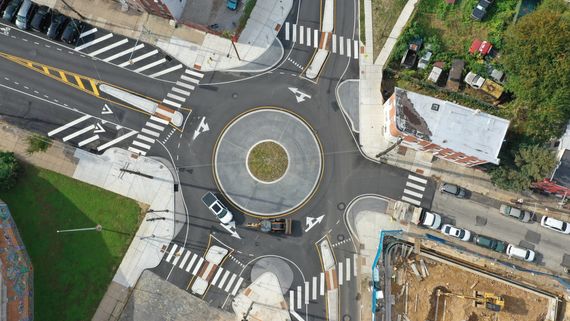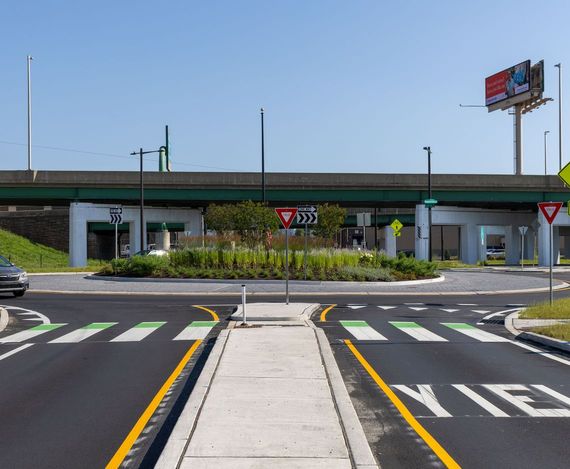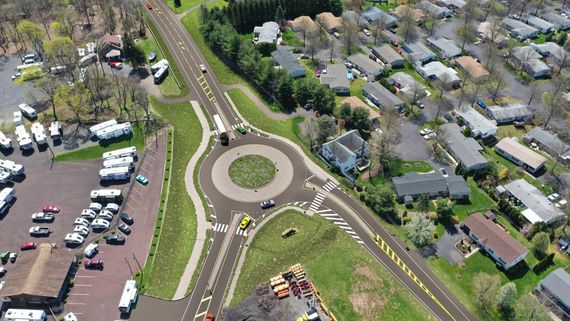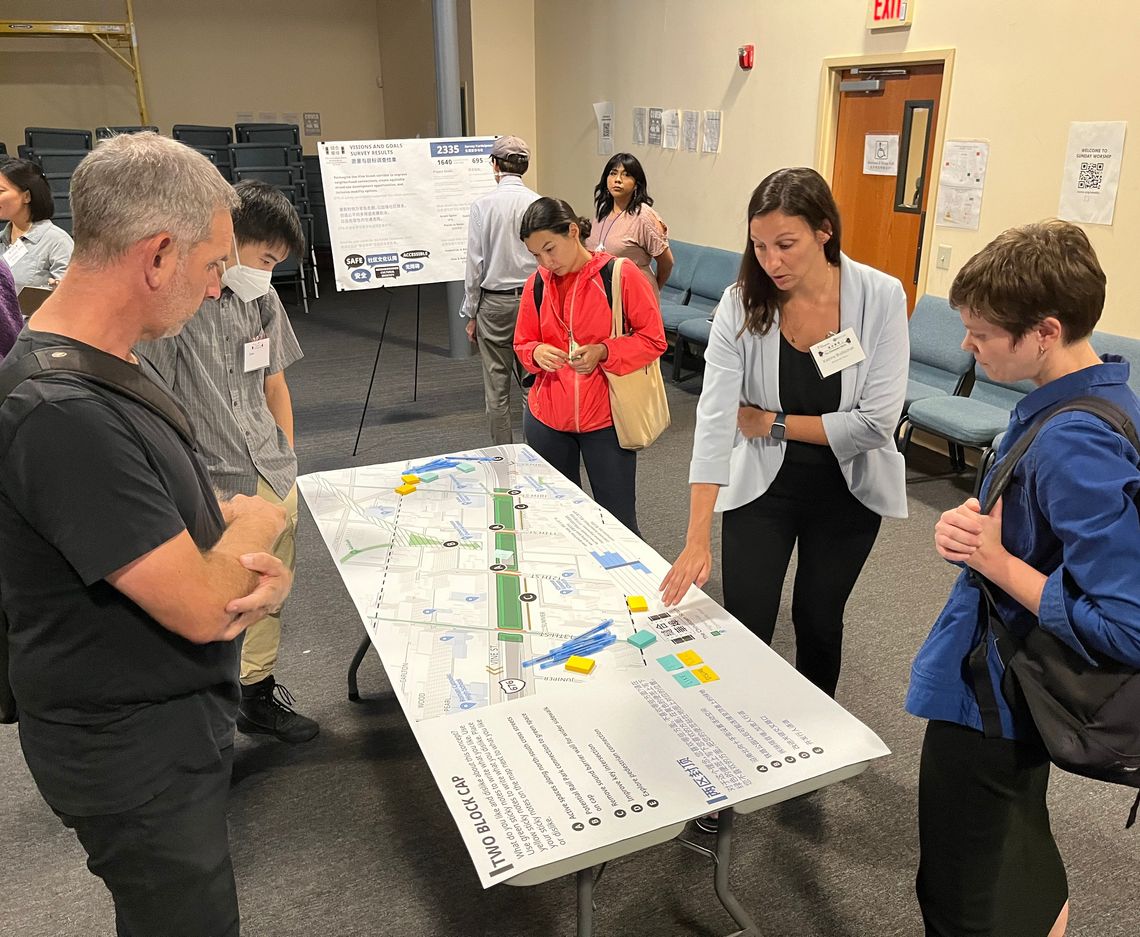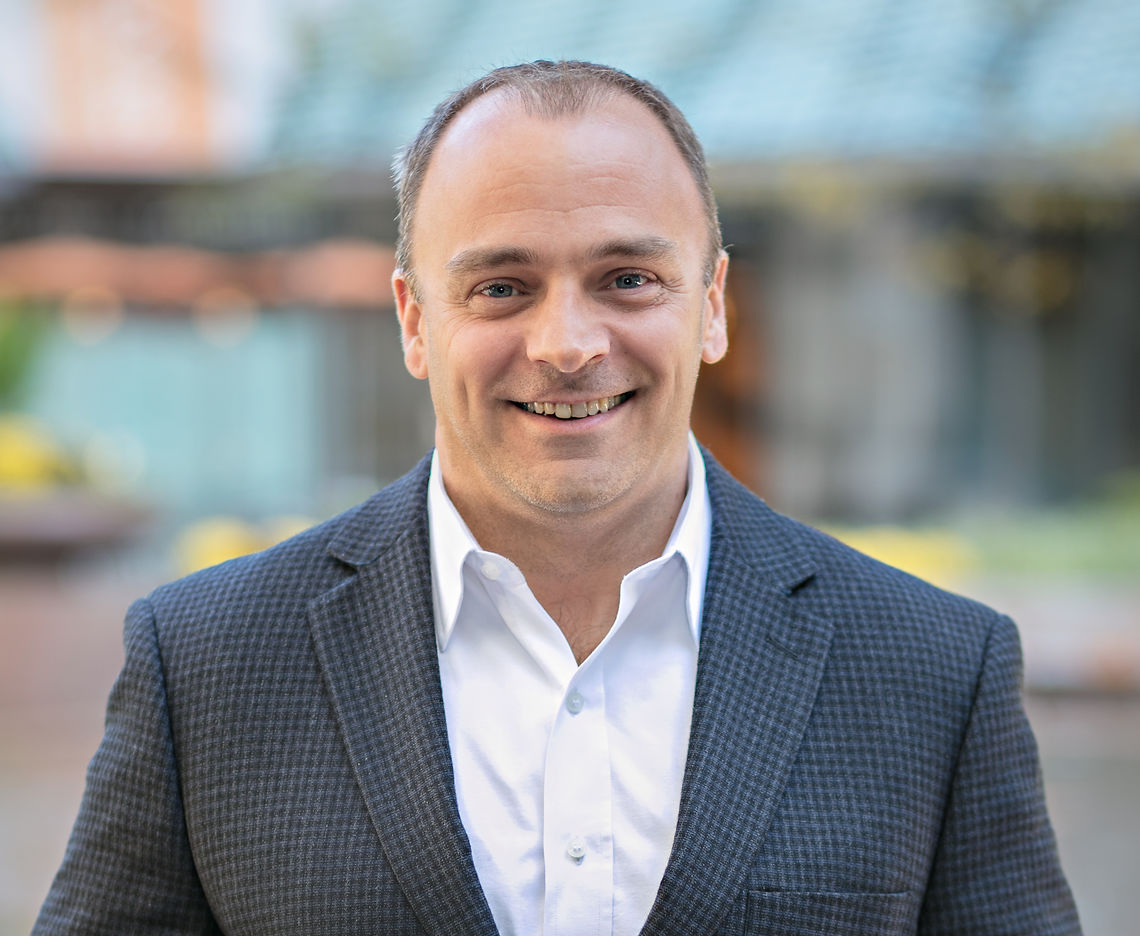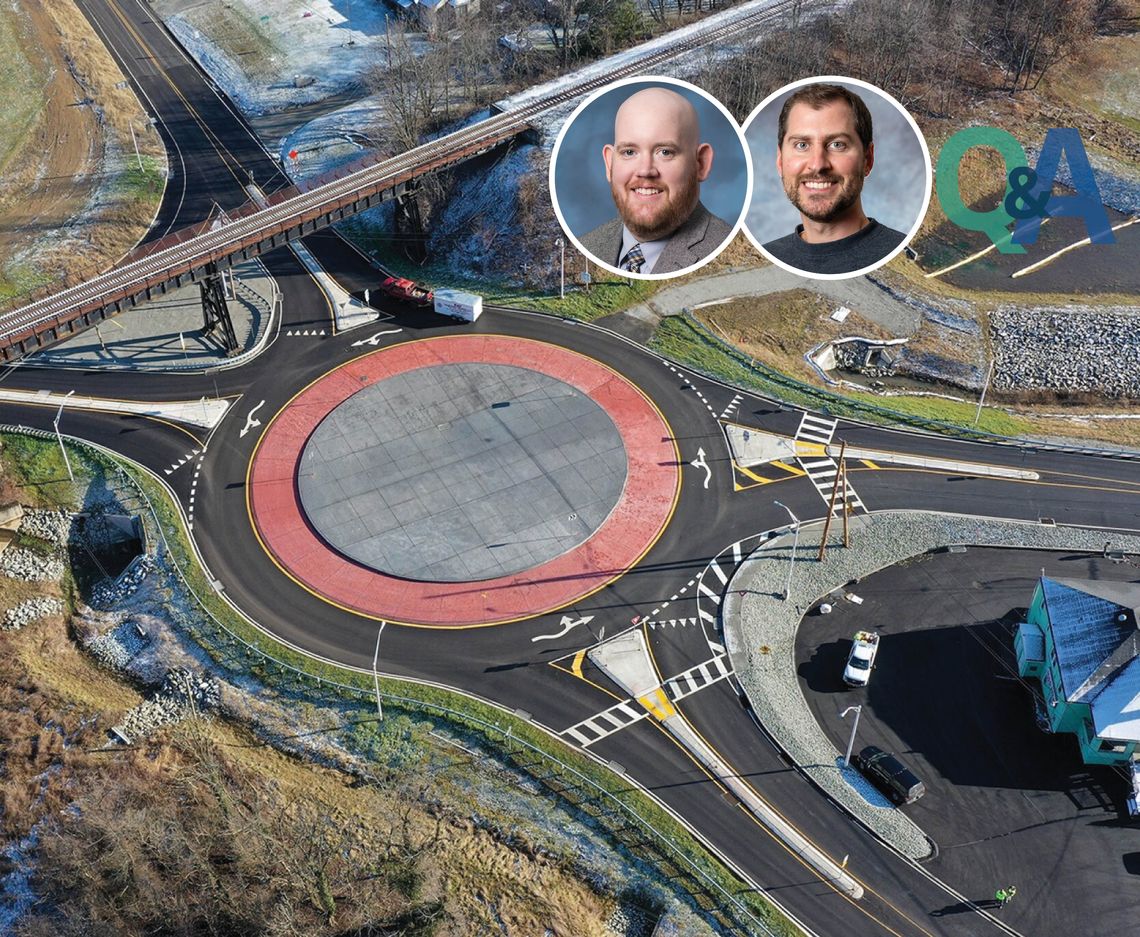
ASK A PROJECT MANAGER - ROUNDABOUT DESIGN
Roundabouts provide an innovative alternative design to a traditional at-grade intersection that can provide additional safety, operational, and environmental benefits. Because of these benefits, roundabouts are becoming more and more commonly designed and built each year in both rural and urban settings. To learn more about roundabout design, we interviewed Jordan Wilcox, PE, Project Manager, Transportation Engineering from McCormick Taylor’s Pittsburgh, PA office and Justin Batchelor, PE, Transportation Engineer III, from our Philadelphia office. Read below to see what Jordan and Justin shared about their experiences, project examples, involvement with stakeholders, and what they like most about designing roundabouts.
RURAL ROUNDABOUTS - Jordan Wilcox, PE
Can you share your recent roundabout experience?
I have had the opportunity to design 6 roundabouts. Three (3) of those roundabouts have been built and three (3) are currently in Final Design. All six (6) roundabouts were single lane. Five (5) were circular and one (1) was an elliptical shape to better accommodate a 5th approach. I also attended a roundabout course hosted at the PennDOT District 11 office in Bridgeville, PA. This was a three-day class that covered a range of topics relevant to roundabout design including planning, operational analysis, design principles, geometric design of single and multi-lane roundabouts, safety and design checks, temporary traffic control, and lighting.

Can you share a roundabout project example and the benefits that resulted from the design?
The recently constructed roundabouts on SR 0981 in Westmoreland County all replace existing stop-controlled intersections. Speed throughout the corridor was a main concern. There was a history of several accidents resulting from high speeds and/or motorists failing to stop. Replacing these intersections with roundabouts has had a speed-calming effect while improving operational delays throughout the corridor. The roundabout designs allowed for improved geometric design while minimizing impacts to sensitive areas such as a church, a cemetery, farms, and new businesses. Read more about this project here.
What is the greatest challenge you’ve run into designing rural roundabouts?
The greatest challenge I have encountered is trying to accommodate oversized vehicles movements, while also trying to maintain a design that meets all safety requirements (Sight Distance and Fastest Path) and minimizes right-of-way and environmental impacts. With the rural setting and the potential for development, we wanted to make sure that the oversized vehicles required for transporting larger construction materials will be able to travel through the roundabouts to get to and from the desired location. Designing for these larger vehicles requires a larger Inscribed Circle Diameter, and larger approach radii. These larger radii often increase the relative fastest path speeds that need to be kept low for overall safety of the facility. Finding the perfect balance, to allow for the necessary turning movement, provide slow enough speeds, and minimize property impacts was a challenging process, but was able to be accomplished through an iterative approach and good communication with all members of the design team.
What role have the public and stakeholders played in the roundabout projects you’ve worked on?
At the beginning, both stakeholders and the public were hesitant to the proposition of roundabouts. Many local farmers were concerned about safety and efficiency while maneuvering large farm equipment through the roundabouts. However, after listening to these concerns, we made sure that along with the agreed upon design vehicle, we also analyzed larger/wider vehicles that reflected dimensions of this equipment ensuring that farmers would be able to safely travel through the roundabouts to get to any adjacent fields that they cultivate.
What do you enjoy most about designing roundabouts?
The best thing about designing roundabouts is the versatility of the design. The design team can work together using sound design principles and good engineering judgement to provide a geometric design for the roundabout that meets the operational requirements for almost any location, while mitigating constraints, and meeting the needs and concerns of the public. I enjoy roundabout design because it is an iterative process, that allows for the designer to use creativity to determine a contextual design based on the user.
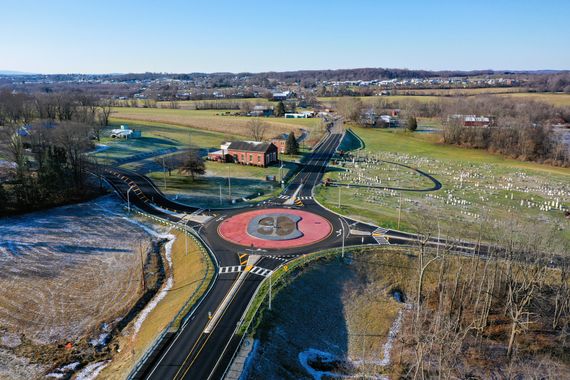
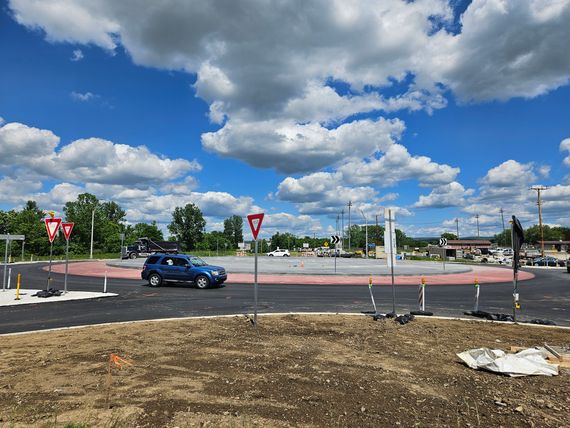
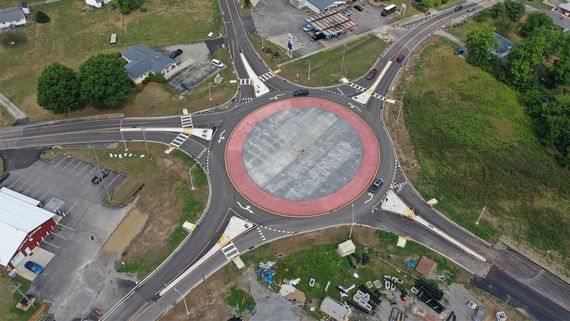
URBAN ROUNDABOUTS - Justin Batchelor, PE
Can you share your recent roundabout experience?
I designed the completed Frankford, Trenton and York Street intersection in Fishtown, Philadelphia, PA. Another one I worked on for the City of Philadelphia is currently in construction at the intersection of Penrose, Moyamensing, and South 20th Street in South Philly. We also have two roundabouts in design for the PA 63 (Sumneytown Pike)/PA 309 Connector Project, Section HT3 located along the border of Bucks and Montgomery counties in PA and two in preliminary design for the North Olden Avenue Multimodal Access & Safety Project located in Mercer County, NJ.

Can you share a roundabout project example and the benefits that resulted from the design?
The intersection in Fishtown (Frankford, Trenton, and York) was greatly improved for all road users. Cars can more consistently travel through the intersection without delays, and all of the pedestrian traffic is safer crossing through. Read more about this project here.
What is the greatest challenge you’ve run into designing urban roundabouts?
The greatest challenge with roundabout design is accommodating large truck movements. By design, roundabouts force vehicles into tight turns to slow them down; however, making sure large trucks won’t get stuck is also important. We sometimes have to add mountable curbs which channelize cars while still allowing trucks to over track if needed. AutoTurn software is necessary to check all the approaches with all vehicles and make sure they are all able to use the roundabout.
What role have the public and stakeholders played in the roundabout projects you’ve worked on?
There was actually a Facebook group created for the Fishtown Roundabout that helped get people excited for it. The community had a gathering and roller skated around it before it was opened to traffic.
What do you enjoy most about designing roundabouts?
I think they can be very elegant and beautiful when designed properly. They are proven to be safer and cost effective. I like the challenge of fine tuning the approach angles and circle diameter to best fit the environment. I am an avid cyclist around the city, and I think they are a step towards making our roads more comfortable for bikers and pedestrians.
